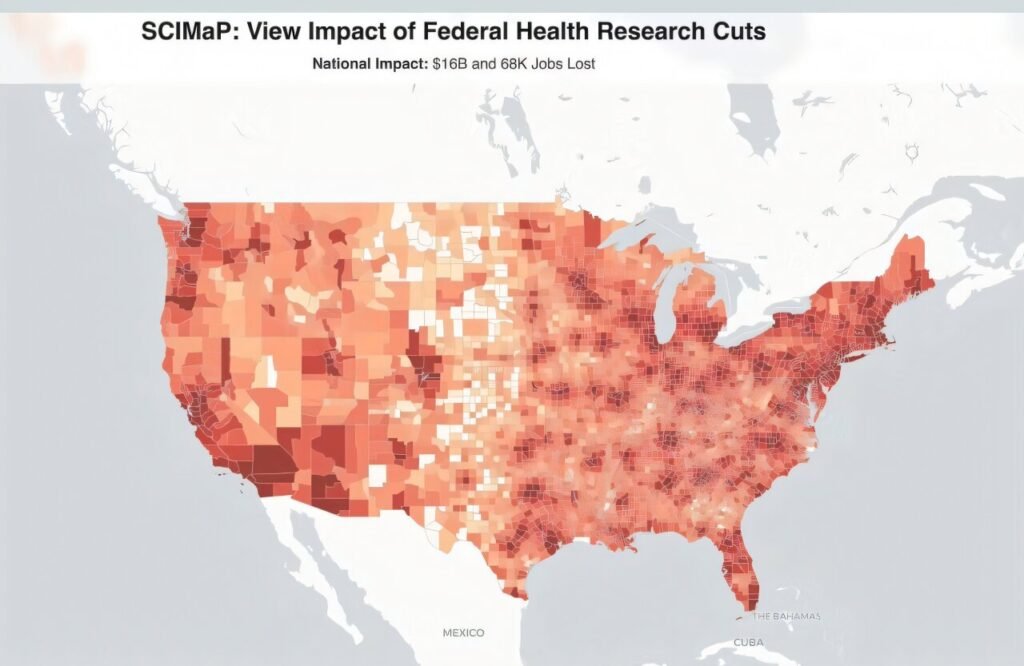In response to proposed cuts to federal funding for scientific research, a team of academic researchers from various universities came together to develop an interactive, data-driven map. This map aims to illustrate the impact these cuts would have at national, state, and county levels, particularly on the local economy and job market.
The Science & Community Impacts Mapping Project (SCIMaP) highlights the repercussions of reduced funding for medical research, such as potential economic losses and job cuts. The team’s analysis indicates an estimated $16 billion economic loss and 68,000 job losses nationwide due to cuts in research infrastructure support for National Institutes of Health (NIH) grants.
Alyssa Sinclair, a postdoctoral fellow at UPenn’s Annenberg Public Policy Center and co-lead for the project, emphasized the importance of NIH-funded research in addressing various health issues and improving daily life. She noted that research innovations play a significant role in curing diseases, advancing technologies, and enhancing safety measures in our environment.
Despite NIH funding only accounting for less than 1% of the federal budget, the investment yields substantial returns. The United for Medical Research coalition reports that every $1 invested in scientific research through the NIH generates $2.56 in new economic activity, supporting over 400,000 jobs across the U.S. NIH-funded research has also led to breakthroughs in treating diseases like cancer, heart disease, and diabetes.
However, proposed cuts to NIH funding, including a significant reduction in indirect costs coverage, could hinder medical research progress. The SCIMaP team’s data visualization aims to shed light on how science and health research contribute to the economy, job market, and overall health outcomes.
Moving forward, the team plans to expand its analysis to assess the impacts of other threats to federally supported research, such as grant terminations and budget reductions for agencies like the National Science Foundation. By raising awareness about the importance of research funding, the SCIMaP project aims to advocate for continued support for scientific endeavors.
The collaborative effort of researchers from various institutions underscores the significance of scientific research in driving innovation, economic growth, and societal well-being. By leveraging data-driven tools like the interactive map developed by SCIMaP, stakeholders can better understand the far-reaching impacts of proposed funding cuts on research and development initiatives.


